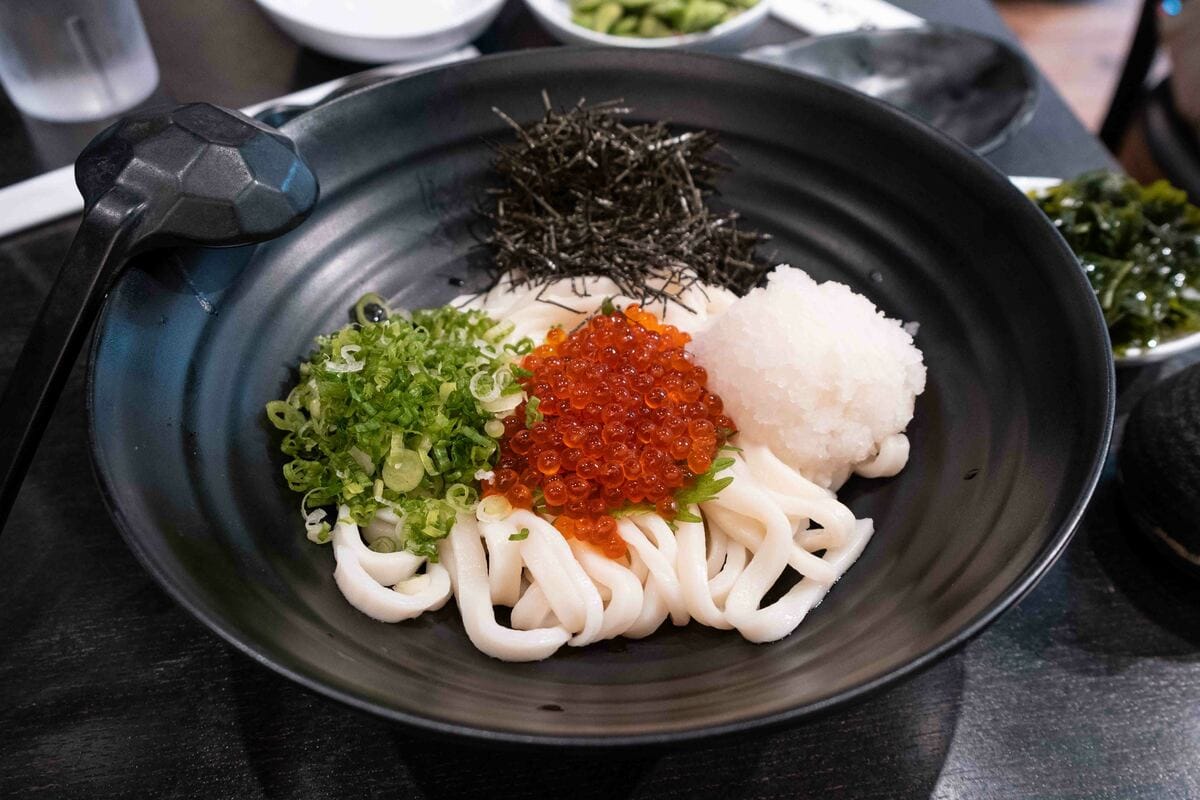
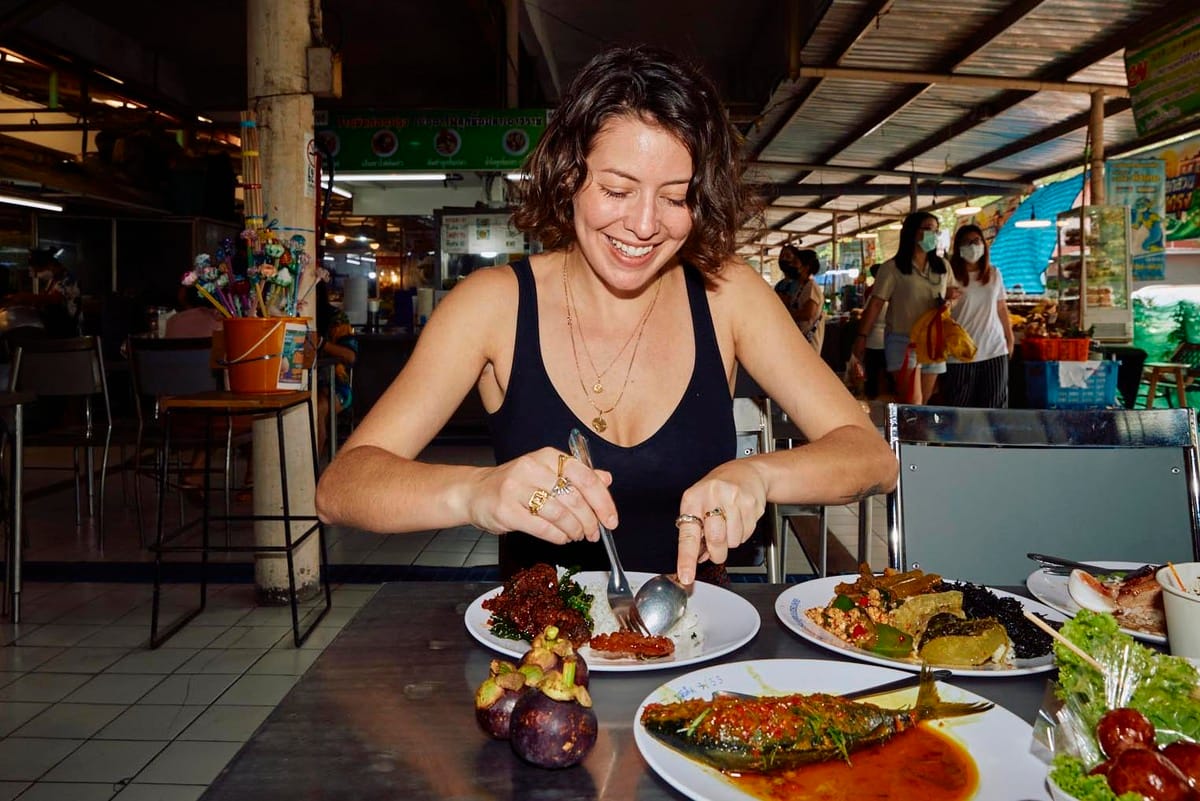
Breakfast at Or Tor Kor Market (ตลาด อตก) in Bangkok. Image: Parker Blain
I have a British passport and I’ve never properly eaten in London. In the past I’ve filled up on family catch ups and meals that end in a choice of desserts from my grandmother. I’m flying there on Sunday for the first time in years. Naturally, I made a list. In this dispatch I’ve share how I research restaurants all over the world. But first, here’s my spreadsheet of 149 places to eat and drink in London, collated from research and industry friends. I’ve included my non-sugar-coated notes so you can see how my brain works. Be warned: it’s hectic. I’m hectic. But hey, it makes me good at my job.
Sofia x
P.S. Follow me on Instagram to see where I end up.

Well, that’s awkward.
Thank you to the ST die-hards who pointed out the broken subscription link in the last newsletter!
To recap: I will always share free content, but if you value the effort it takes to bring you the unsung venues and stories of the food world, please consider upgrading to ‘Off Menu’. My next dispatch will have some extra juicy bits available to paid members only. I’m pretty sure you’ll dig it if you think smashed avocado is boring. As a thanks to early adopters, here’s 10% off:

How I find great restaurants all over the world
My super power is finding somewhere inspiring to eat anywhere in the world. Admittedly, it’s not actually a super power. Anyone can do it, but it requires time, research skills and a stubborn determination (my ex once called me a pit bull as a compliment). The main difference between me and you is that finding restaurants that move people is my job. And, if I’m being honest, I get off on it. Here’s my eight-step method.
1. Constant, passive research
By the time I book a ticket somewhere, I’ve already accumulated at least some information on where to dine. Whenever I see someone post about a restaurant that intrigues me on Instagram, I’ll bookmark it in a folder so I can easily find it later. I know other people who drop pins on Google whenever someone makes a recommendation (though I prefer to create my own maps). I find it easier to keep track of places digitally, so if I read a newspaper or magazine article that mentions somewhere, I’ll find it online and bookmark it.
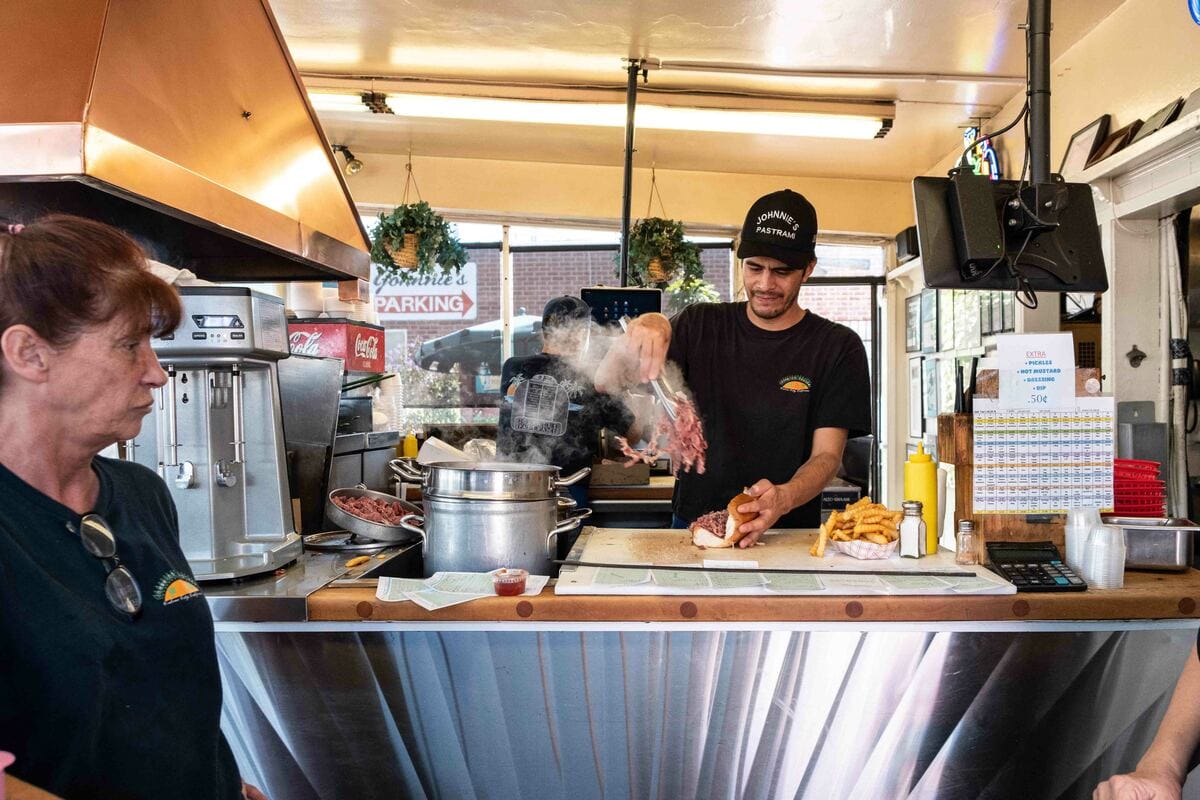
2. Eat out, a lot
I’m lucky that my job allows me to cross this one off easily. Although flavour preferences are subjective, the more you eat, the more you understand. That could be anything from grasping which ingredients go together, through to clocking what dishes from certain regions are meant to taste like. With a solid base, you can also start to appreciate where a chef might have taken an interesting spin on their menu from a cultural, historical or societal standpoint, beyond “seasonal ingredients sourced locally”, which is certainly no longer a unique selling point.
3. Take media coverage with a grain of salt
Food media don’t always get it right. A lot of the time we are sent press releases, which have the sole intention of selling a venue to a journalist (or intern) with flowery language such as “elevated” and “innovative”. The other thing media don’t have enough of is time. There are very few people whose reporting and opinions I read and trust. I find that “best of” lists are generally repetitive. Sometimes it’s because the places mentioned truly are best in show. Other times, it means joining a queue and eating where everyone else is eating before leaving disappointed. I will always look at Eater’s 38 Essential Restaurants lists (though can’t say I agree with some of the Melbourne inclusions), consider the Michelin Guide and World’s 50 Best Restaurants, and watch a Netflix episode of Street Food or Chef’s Table – but I won’t jot down anywhere featured unless it comes up repeatedly, ideally from people I know who eat like I do.
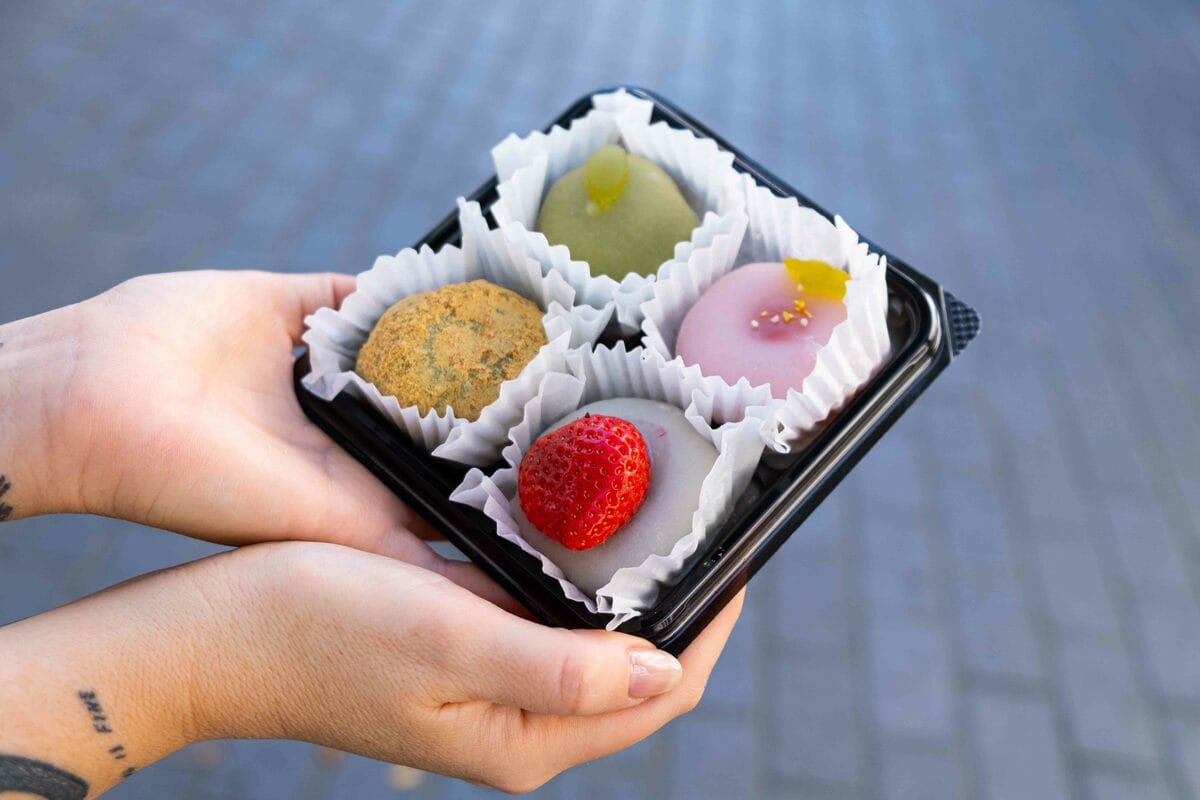
4. Google curiously
Before arriving in a destination, I’ll research specific dishes. It might start with a simple Google query, such as “traditional dishes Lombok”, to get my head around what the typical local dishes are. I’ll go deeper from there, looking for reasons behind why, say, pork is eaten in some parts of Indonesia and not in others (Islam versus Christianity). Then I want to know how this came to be historically (Christianity was brought to Indonesia by Portuguese maritime traders back in the 16th century). That might then spark other questions, perhaps about the Portuguese influence on today’s Indonesian cuisine (in some parts of the country, fish is cooked with oranges, while nutmeg and clove appear in Betawi cuisine and rissoles are popular around the country). It’s a rabbit hole, but it provides so much context.
5. Ask people you trust
This is easier for me because I’m surrounded by professional food lovers, whether journalists, chefs, cookbook authors, editors, publishers, restaurant owners, tour guides, tourism representatives, etc. Often, asking these people where they like to eat results in a list being emailed, or an introduction to someone who has put one together. If you don’t know anyone, find people you trust (if you’re reading this, I hope you’ve found one already). Journalists and food writers generally have a public profile or Instagram account these days. Many of us have personal newsletters (hello, thanks for reading!).
6. Map it out
This is where a little obsessiveness comes in handy. Once I have a shortlist (or more accurately, a long list) of places I’m interested in, I’ll plot them on a Google map; colour codes, icons and all. It helps me understand the layout of a destination, as well as if there are pockets where certain communities gather. This could be where the local Mauritian community eats for a taste of home, or where new-gen restauranteurs are hanging out (just look for a cluster of natural wine bars, then decide if you want to make a beeline for them or avoid at all costs).
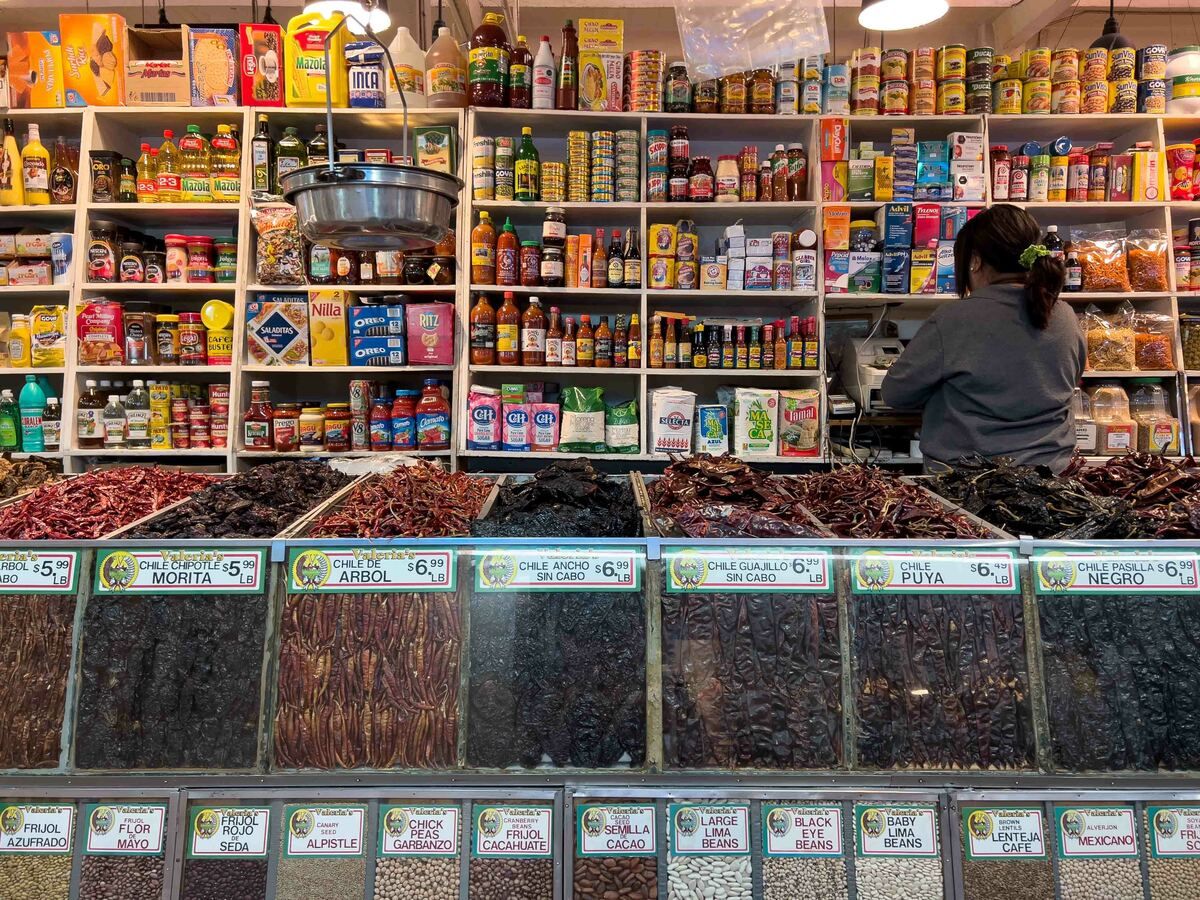
7. Get your bearings with a food tour
This is a great option if you want to put your research to the test and see where there is overlap, or simply can’t be bothered doing any in the first place. Googling “food tour” doesn’t always work here – there are a lot of average ones. For more mainstream tours, I trust Intrepid Travel’s Urban Adventures day tours with a food bent. I also love Culinary Backstreets, with tours in different cities around the world. One day, I plan to tour Mexico with Club Tengo Hambre, who I have followed on Instagram for years and have bookmarked (see tip number 1). There’s also a rise in individuals like myself putting on tours (enquire within). The best way to find out more about them is to follow on social media and make sure you’re signed up to their newsletters.
8. Be prepared to throw it all away
Here's the clincher: even after spending days researching where the best places are to eat in a destination — or even your home — the most memorable experiences are often those you can’t plan or predict. You might catch a waft of chickpea and lamb stew slow-cooking in a communal oven on a Greek island and follow your nose, or spot a queue of locals lining up at a nameless hole-in-the-wall ramen spot in Tokyo and decide to join it. You will get recommendations on where to eat throughout your travels, and might even score an invite into someone’s home.
For me, researching to what could be considered a psychotic level isn’t about finding “the best” of something, it’s about immersing myself in a place before I arrive and ensuring that I don’t waste time or money on a bad meal.
